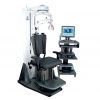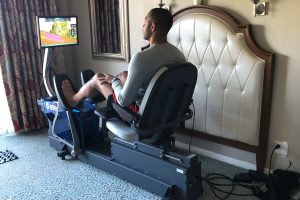
Thank You, Athletic Trainers!
Practice ManagementWe employ ATCs in industrial and clinical education settings. They provide a unique service, truly making a difference in keeping workers safe and educating clinicians worldwide. We are highly appreciative of the services that they and ALL Athletic Trainers provide.
Every March, the National Athletic Trainers Association (NATA) spreads the message about the important work of Athletic Trainers everywhere (1). During this time, it is important to bring added awareness to what an Athletic Trainer is and the valuable services that they provide in various settings across America. Athletic Trainers are a big part of BTE – from providing product training and support, to helping drive proactive injury prevention care for thousands of employees nationwide, in BTE OnSite employee health facilities. So, this March, we are recognizing the great work that Athletic Trainers conduct on a daily basis!
The NATA was founded in 1950 when around 200 members gathered together in Kansas City where the first meeting took place. Since then, the profession has grown to more than 43,000 members across the world (2) and annual conferences draw between 10,000-20,000 professionals from all over. Traditionally, “Trainers” as they were called back then worked mostly with high school, college and professional sports. Today, the professionals in this organization are referred to as “Certified Athletic Trainers (ATCs)” and can be found working with University athletic programs, secondary schools, PT clinics, hospitals, and emerging fields. Among these emerging settings are with the military and industrial or occupational health domains. In each of these settings, they bring with them the education needed to make a profound difference in the health of individuals and employers.
Athletic Trainers must meet strict criteria to obtain and maintain their certification credentials. First, one must graduate from an accredited undergraduate or graduate program prior to sitting for a national certification exam (3). Upon passing of this exam, one must then obtain a minimum of 10 CEUs specific to Evidence Based Practice topics obtained at live events and home study courses per reporting period. Also, an individual must earn a total of 50 CEUs in any of a number of environments, in addition to regular renewal of advanced life savings skills. Injury and illness prevention, examination, assessment and diagnosis, emergency care, therapeutic intervention, and health care administration are all domains in which an Athletic Trainer is qualified. They are far beyond the days of where they are recognized to only tape ankles and apply ice bags after activity!
Here at BTE, we employ Athletic Trainers in industrial and clinical education settings. They provide a unique service day in and day out and truly make a difference in keeping workers safe while also educating clinicians worldwide. We are highly appreciative of the services that they and ALL Athletic Trainers provide, and we thank you all for the work that you are doing, no matter the setting. Over the course of the month, we invite you to share with us and nominate an Athletic Trainer in your professional or personal world, that is making a difference to the individuals under his or her care. We will feature them on social media and congratulate them on their efforts. So, happy National Athletic Training Month everyone – and a big thanks for all that you do!
Jeff Johnson, MA, ATC
Clinical Specialist, BTE Technologies





